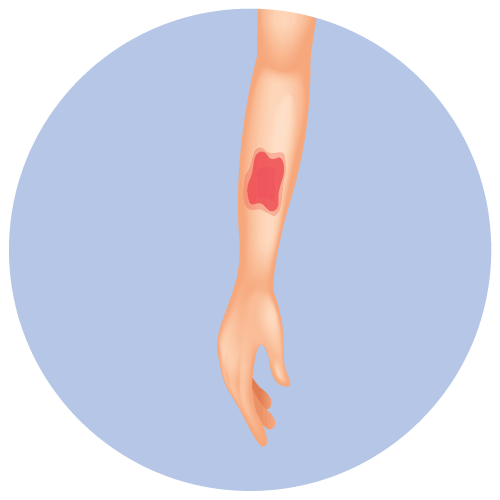| Name | Dithranol |
| Classes |
Nutritional Supplement Vitamin Vitamin Analogue |
| Diseases |
Psoriasis Skin Disorder |
Dithranol
Dithranol, also known as anthralin, belongs to the class of antipsoriatic medications. The precise mechanism of action of dithranol in the treatment of psoriasis is not fully understood. However, it is believed to inhibit DNA synthesis and cell proliferation. Dithranol may also exert anti-inflammatory effects, contributing to its efficacy in managing psoriatic lesions.
Dithranol is indicated for the topical treatment of psoriasis, a chronic skin condition characterized by the rapid multiplication of skin cells, resulting in the formation of scales and red patches.
The dosage of dithranol can vary based on the formulation and the severity of the psoriatic lesions. It is essential to follow the specific product labeling or healthcare provider recommendations.
Adverse reactions associated with dithranol use are generally related to its application on the skin. The following are potential adverse reactions:
- Skin irritation (e.g., redness, itching)
- Staining of the skin and clothing
- Burning sensation
- Erythema
- Skin Sensitivity: Dithranol may cause skin irritation, especially in individuals with sensitive skin. Patch testing before widespread use is recommended.
- Staining: Dithranol can stain the skin and clothing. Care should be taken during application to avoid staining and should be considered when selecting clothing.
- Avoidance of Mucous Membranes: Application of dithranol to mucous membranes, such as the eyes, nose, and mouth, should be avoided.
- Sun Exposure: Sun exposure during treatment may increase the risk of skin irritation. Adequate sun protection measures should be taken.
Contraindication
Dithranol is contraindicated in individuals with a known hypersensitivity to dithranol or any of its components.
None known.
Dithranol is contraindicated in individuals with acute pustular psoriasis, a severe form of psoriasis characterized by the presence of pus-filled blisters.
 Bangla
Bangla English
English


